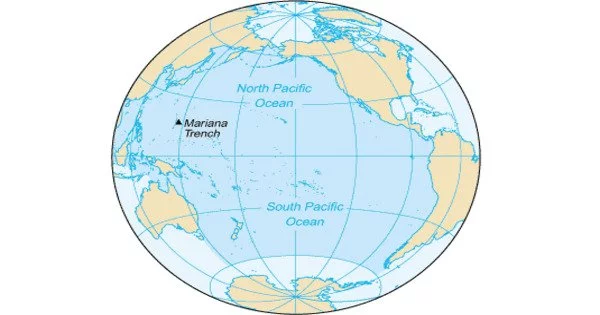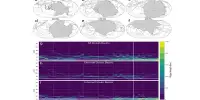This timeline of human settlement in the tropical Pacific is consistent with a current scientific understanding of the subject. The first human settlement of the Pacific Islands is thought to have occurred around 3,300-3,500 years ago, as Austronesian-speaking peoples migrated eastward from Island Southeast Asia and Taiwan in large ocean-going canoes. This initial settlement of the Pacific Islands is sometimes referred to as the “Lapita expansion,” named after the distinctive Lapita cultural complex that is found in the archaeological record of many of these early settlements. The Lapita people are believed to have spread as far east as Tonga and Fiji, and their descendants eventually went on to populate much of Polynesia.
The second major migration of humans to the tropical Pacific occurred around 1,000 years ago, as Polynesians expanded out from the central and eastern Pacific to settle previously uninhabited islands such as New Zealand and Hawaii. I sometimes refer this expansion to as the “Polynesian expansion.”
The tropical Pacific Ocean’s islands are thought to have been populated by humans in two distinct migrations beginning around 3,330 years ago. The first took a northern route out of what is now the Philippines, while the second took a southern route from Taiwan and New Guinea. People arrived on the islands between these routes, which are now known as the Federated States of Micronesia, about 1,000 years later.
Although we can’t prove that there was an interaction between these two pathways, we can present an argument that says the data that exists now about migration in the Pacific is probably a lot more incomplete than it is thought to be.
Andrew Kemp
However, a new discovery by a Tufts sea-level researcher and his colleagues suggests that the islands of Micronesia were possibly settled much earlier than previously thought and that voyagers on the two routes may have interacted with one another. Their findings were published in the journal PNAS.
Andrew Kemp, an associate professor in the Department of Earth and Climate Sciences, was drawn to Micronesia to improve his understanding of how climate change impacts global sea level change by collecting new data from the tropical Pacific Ocean, which is not nearly as well-documented as the north Atlantic Ocean.
With support from the National Science Foundation, the research team collected cores of mangrove sediment on the islands of Kosrae and Pohnpei in the Federated States of Micronesia. Although relative sea level – the height of the land relative to the height of the ocean next to it – fell during the past 5,000 years across much of the tropical Pacific, in Micronesia radiocarbon dating showed that relative sea level rose significantly, by about 4.3 meters (14 feet) because the islands are sinking.
Although the researchers can’t yet fully explain why the two islands are subsiding so much faster than others in the Pacific, they could clearly see the results and their meaning for understanding how people came to populate remote Oceania.

The team – including Juliet Sefton, then a postdoctoral researcher at Tufts and now an assistant lecturer at Monash University in Australia, and Mark McCoy, an associate professor of anthropology at Southern Methodist University – was struck by the implications of relative sea level for interpreting the monumental ruins of Nan Madol, a large series of stone buildings constructed on islets separated by canals filled with ocean water just offshore from the island of Pohnpei.
The ruins, now a U.N. World Heritage site, are long presumed to have been administrative or religious buildings constructed about 1,000 years ago for the island’s elite to live apart from the main population in the island. But Kemp and his colleagues realized that long-term relative sea-level rise meant that this presumption was incorrect. When the structures were built, they were on the island itself, not separated by water. According to McCoy, the prevailing description of Nan Madol as the “Venice of the Pacific” may not have been accurate when it was constructed.
It got the researchers thinking about when these islands were in fact first settled. Kemp notes that the seafaring people who first came to the islands would probably have lived at the coastline – that’s why researchers look for archaeological evidence there but haven’t seen it for older inhabitation.
“We propose that Pohnpei and Kosrae perhaps weren’t settled anomalously late, but rather they were settled around the same time as the other islands in the Pacific,” Sefton says. “People arrived and lived at the coast, but subsidence of the islands caused relative sea level rise, which submerged the oldest archeological evidence. It’s probably underwater, yet to be found – if it will ever be found.”
If that is the case, people on the northern and southern migrations may have interacted with one another around the volcanic islands of Micronesia – Kosrae, Pohnpei, Chuuk, and Yap. There’s been no evidence of this before because researchers were building on the wrong assumptions about when the islands were first inhabited based on sea levels. McCoy points out that archaeologists “have been looking in the wrong place for years because we assumed that relative sea level was falling.”
“Although we can’t prove that there was an interaction between these two pathways, we can present an argument that says the data that exists now about migration in the Pacific is probably a lot more incomplete than it is thought to be,” says Kemp.
















